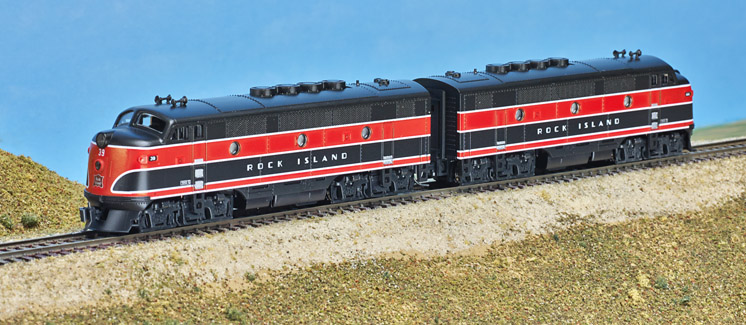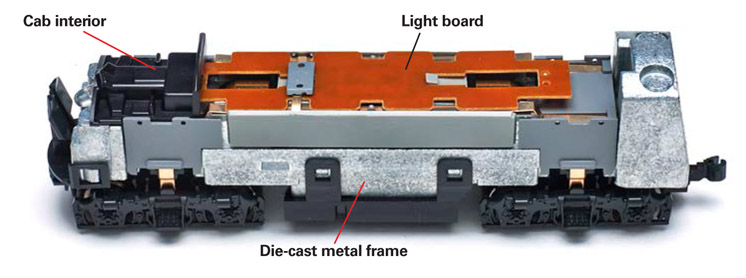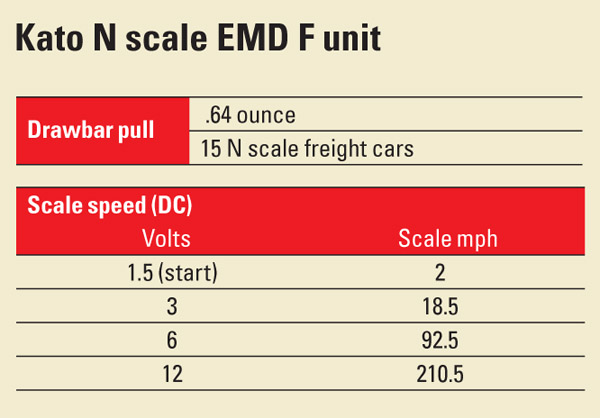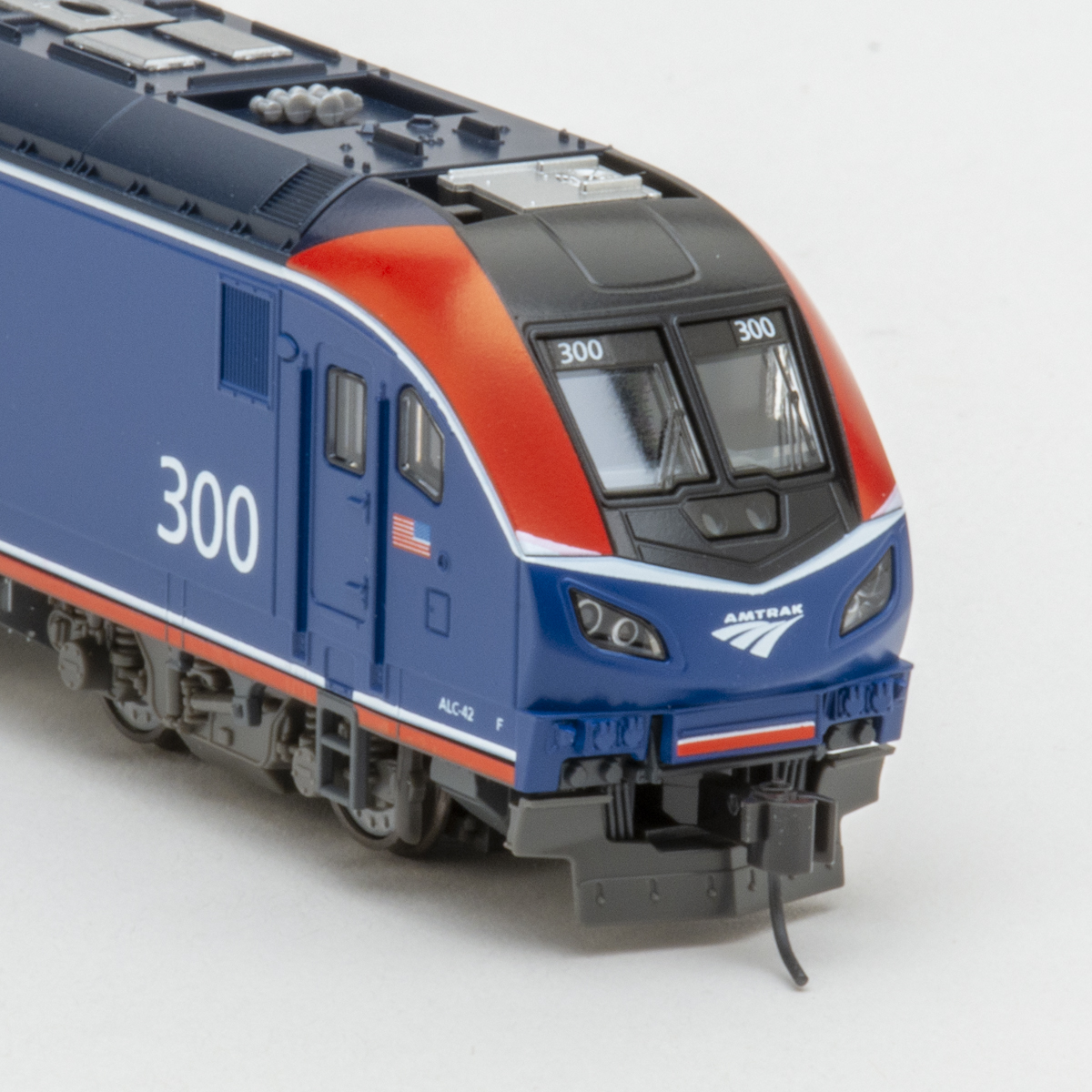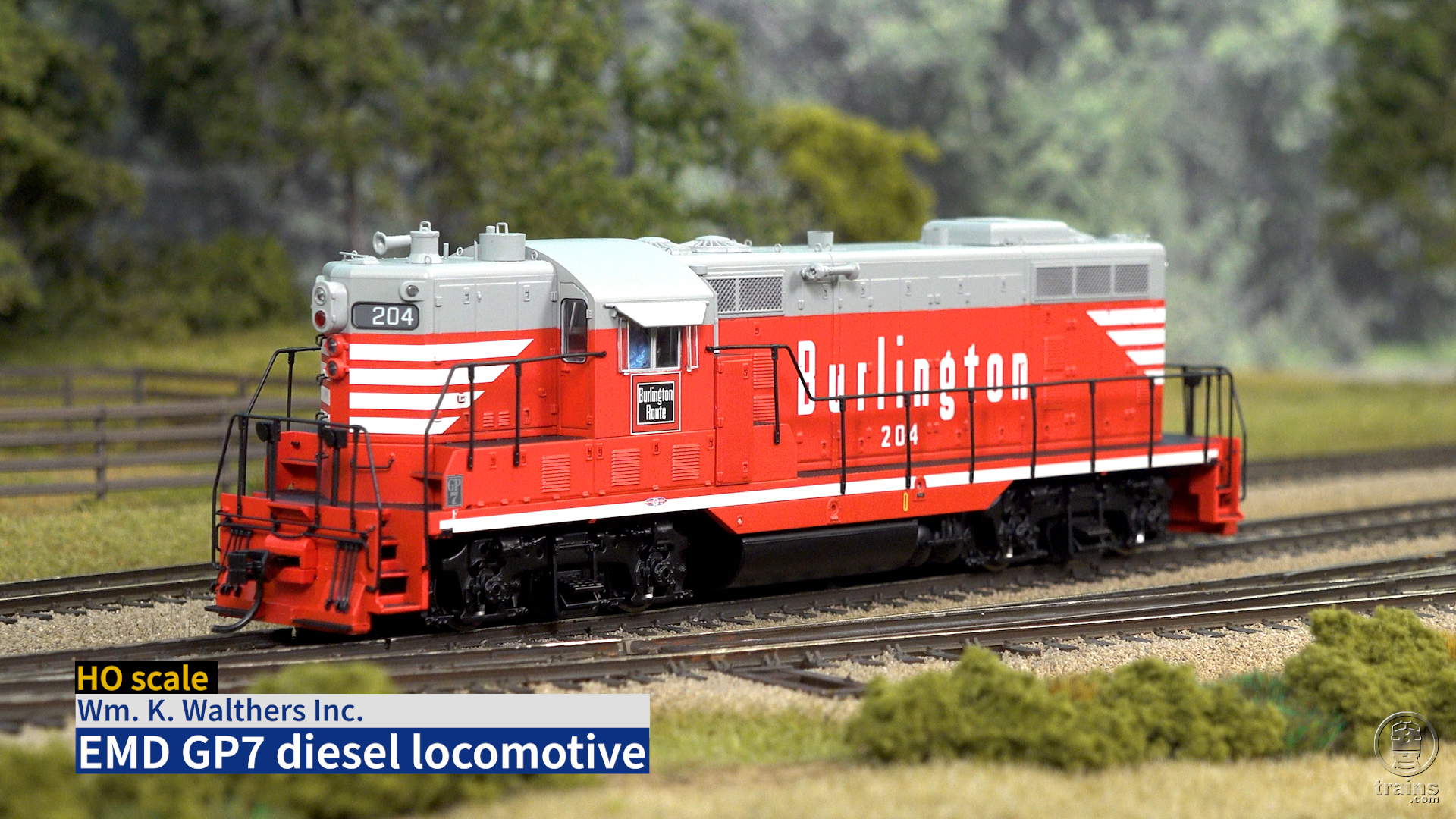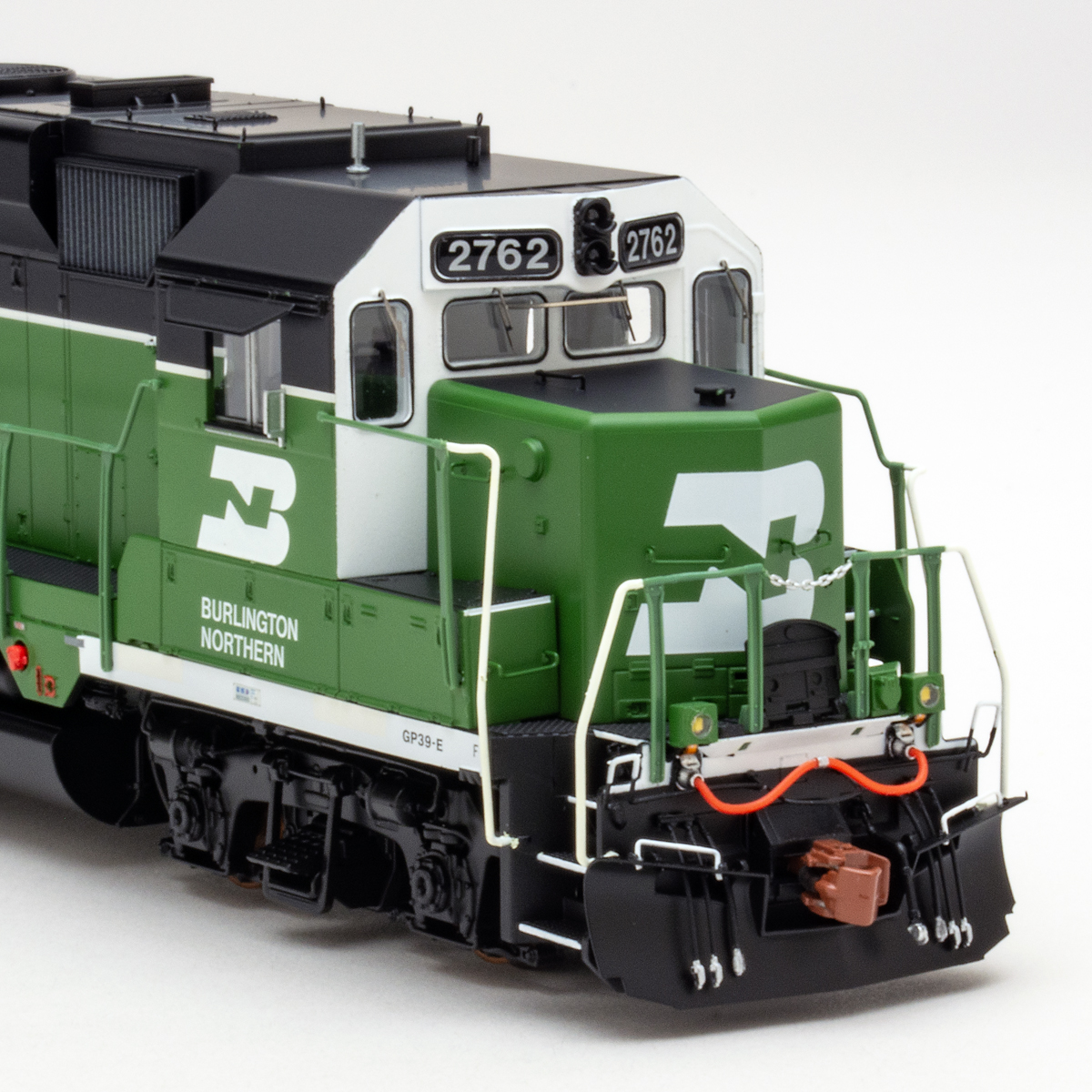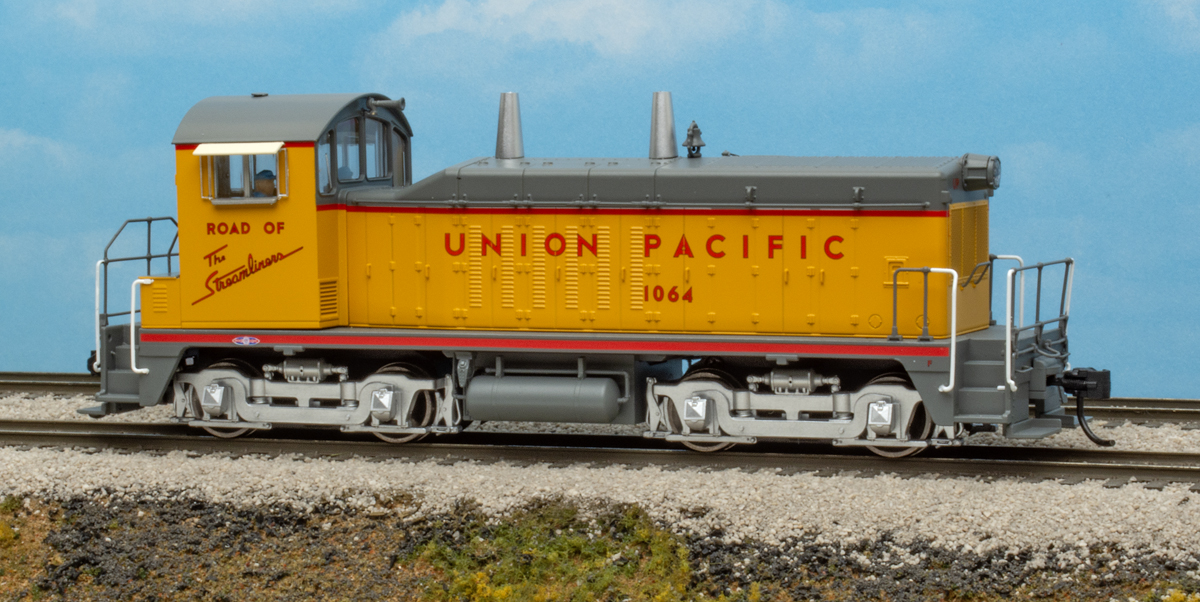History. After World War II, locomotive manufacturers Alco, Baldwin, and EMD all produced four-axle, 1,500-hp cab unit diesel-electrics for freight service. Electro-Motive Division’s entry was the F3, which actually started production a year before the 1,350-hp F2. The two engines proved popular with railroads all across the continent, selling 1,911 units in four years, counting both A and cabless B units.
The early version of the F3 (which railfans refer to as “phase 1”) was outwardly identical to the F2; both had “chicken-wire” side grills, three side portholes, and four radiator fans in tall shrouds. Therefore, Kato can label its Chicago, Burlington & Quincy models as F2s, and its Chicago & North Western models as F3s.
Though they were soon supplanted by the more popular F7s and more powerful F9s, the reliable and versatile F2s and F3s stayed in service for decades, finally yielding to hood units like the GP35 and SD40 that offered easier maintenance and better cab visibility. A handful are still running today in museum and excursion service.
Once over. Depending on the road name, the engines have one of two different body shells. The Burlington and CNW body shells bear the dual roof grills of a dynamic-brake-equipped locomotive. The Chicago, Rock Island & Pacific and Atlantic Coast Line models have steam generators instead. The ACL set consists of an A unit and a cabless B booster; the other sets are two A units. In all cases, both units are powered.
The one-piece plastic body shells are crisply molded, with fine rivet and grill detail. The grab irons are molded in place, and the glazing in the side portholes is flush-mounted. The roof-mounted horns are separate details. All the body dimensions I checked matched those on prototype diagrams printed in Model Railroader Cyclopedia: Vol. 2, Diesel Locomotives (Kalmbach Publishing, out of print).
The paint jobs on all four road names are crisp and accurate, with sharp color separation, unbroken lines, and straight, legible lettering. The paint schemes and placement of details matched prototype photos that I found in books in Kalmbach Publishing’s David P. Morgan Memorial Library. As is the usual case with Kato, the locomotives come equipped with magnetic knuckle couplers that need to have their trip pins installed by the modeler. This is a simple task with a pair of needle-nosed pliers. The rear couplers are truck-mounted to improve the models’ performance on tight curves. Both sets of couplers on all our test samples were mounted at the correct height.
Each engine ran smoothly and quietly, starting at less than 2V. The models are geared for speed, though, topping out at more than 200 scale mph. The highest available gearing on the prototype yielded a top speed of 102 mph. Even at full voltage, motor noise was minimal.
I also placed both engines about six inches apart on our eight-foot test track and ran them back and forth to test how they’d run together. Though the two models moved at slightly different speeds, the difference was not significant. These engines should run smoothly when coupled together.
The models each have two headlights, both illuminated by the same light-emitting diode (LED). The lights came on when running forward and turned off in reverse, which though not prototypical, does prevent the arguably worse error of having the rear unit’s headlight on in a two-engine lashup.
Our test-bench force meter registered a pulling power of .64 ounces, equivalent to 15 N scale freight cars on straight and level track. Since these locomotives are meant to be run as a pair, and both are powered, that adds up to a respectable length of 30 cars. To test how the engines handled curves and turnouts, I ran the decoder-equipped Burlington units on our project layout. The set moved a 10-car train through 13″-radius curves and no. 6 turnouts flawlessly.
An icon. Three-quarters of a century after the first F units rolled out of the shops, EMD’s covered wagons remain icons of North American railroading. Kato’s version would be a worthy addition to any N scale engine house.
Manufacturer
Kato USA
100 Remington Road
Schaumburg, IL 60173
www.katousa.com
Road names: Chicago, Rock Island & Pacific (F2 A-A set); Atlantic Coast Line (F2 A-B set); Chicago, Burlington & Quincy (F2 A-A set); and Chicago & North Western (F3 A-A set).
Era: 1945 (F3) or 1946 (F2) to late 1970s, as decorated
Features
- A-A or A-B sets available, depending on road name
- Blackened metal wheelsets (in gauge) with all-wheel drive and electrical pickup
- Cab interior and window glazing
- Directional light-emitting-diode headlight (A units only)
- Dynamic brakes and/or steam generator, as appropriate
- Five-pole, skew-wound motor with dual brass flywheels
- Kato couplers (at correct height) with modeler-applied trip pins
- Minimum radius: 9.75″
- Molded-in grab irons
- Weight: 3.1 ounces each





